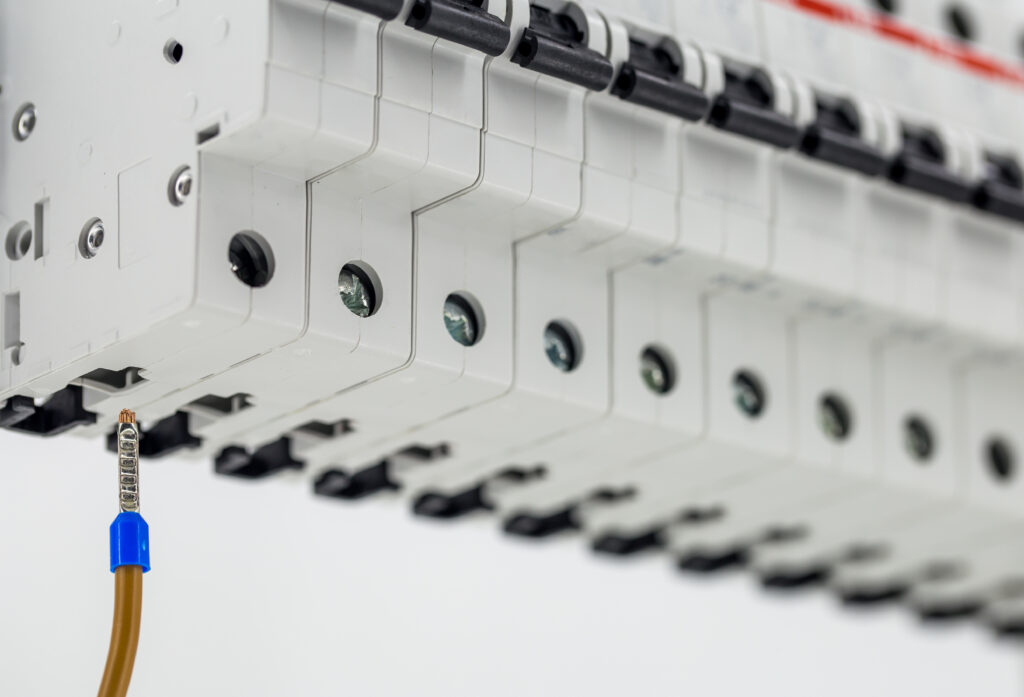Daily, we rely on countless electrical systems to keep things running smoothly, from powering household appliances to enabling industrial machinery. A key component ensuring the safe and efficient operation of these systems is low-voltage switchgear. Often unnoticed by end-users, low-voltage switchgear plays a crucial role in controlling, protecting, and isolating electrical equipment and systems, thereby safeguarding both people and property.
What is Low Voltage Switchgear?
Low voltage switchgear combines electrical devices that manage and control power distribution within systems operating at low voltages, typically below 1,100 volts. The equipment includes circuit breakers, switches, fuses, and protective relays, which together help manage and regulate electrical power in homes, businesses, and industrial settings. This switchgear ensures that electrical systems operate reliably while minimizing the risk of overloads, short circuits, or electrical fires.
When you turn on a light switch or start up a computer, low-voltage switchgear is often working in the background to handle these actions. In more complex setups, like factories or data centers, these systems are even more critical, preventing power interruptions and ensuring the equipment runs safely and efficiently.
Why is Low Voltage Switchgear Important?
Low-voltage switchgear is important for several reasons:
- Protection Against Electrical Hazards: One of the primary purposes of low voltage switchgear is to protect against potential electrical hazards. By controlling the distribution of power, it prevents issues like overloads and short circuits, which can lead to fires or equipment damage.
- Efficient Power Distribution: Low voltage switchgear helps manage the flow of electricity, distributing power efficiently across different areas of a building or facility. In commercial or industrial environments, this can mean the difference between smooth operations and costly interruptions.
- Maintenance and System Control: Low voltage switchgear allows operators to control and maintain various systems without risking injury or causing disruptions. In industrial settings, it enables safe maintenance procedures, letting technicians isolate and work on specific parts of an electrical system without having to shut down an entire operation.
- Enhancing Longevity of Equipment: By protecting equipment from power surges or other issues, low-voltage switchgear extends the lifespan of electrical equipment. Regular operation within safe parameters minimizes wear and tear, reducing the need for frequent repairs or replacements.

Common Uses of Low Voltage Switchgear in Daily Life
Low voltage switchgear isn’t limited to industrial applications; it’s present in many parts of our everyday lives:
- Residential Buildings: In homes, low voltage switchgear is typically found in breaker panels, managing power distribution to prevent overloads or electrical fires. It ensures that each part of the house gets the right amount of power safely, whether it’s for lighting, heating, or kitchen appliances.
- Commercial Spaces: In office buildings, retail spaces, and healthcare facilities, low voltage switchgear helps manage power flow efficiently. This equipment is essential for safety and uninterrupted service, whether it’s keeping elevators running, managing HVAC systems, or ensuring lights and computers stay powered.
- Industrial and Manufacturing: Low voltage switchgear is indispensable in factories, production facilities, and other industrial environments. It safeguards heavy machinery from electrical faults, protecting valuable assets and maintaining productivity. By isolating parts of the electrical system, it enables safe, routine maintenance while allowing other operations to continue.
- Data Centers: In data centers, where a continuous power supply is critical, low-voltage switchgear plays a significant role. It ensures that power is distributed consistently to prevent downtime and protects servers and other equipment from power-related issues.
Types of Low Voltage Switchgear Components
Low voltage switchgear generally includes several key components:
- Circuit Breakers: Circuit breakers are essential for preventing overloads and short circuits. They automatically cut off power if the current exceeds safe levels, protecting equipment and personnel.
- Switches: Switches are used to manually or automatically control the flow of electricity. They allow operators to control where and when power is applied in a system.
- Protective Relays: Protective relays monitor current levels and other parameters, triggering circuit breakers if irregularities are detected. This automated response helps prevent damage from unexpected electrical events.
- Fuses: Fuses are one-time protective devices that blow or melt if the current gets too high, thereby disconnecting the circuit. While simple, they’re highly effective in preventing damage from electrical faults.
Choosing the Right Low-Voltage Switchgear
Choosing the right low-voltage switchgear for a particular application requires careful consideration. Different environments—whether residential, commercial, or industrial—have unique power needs and safety requirements.
Here are some factors to keep in mind:
- Capacity and Ratings: It’s essential to ensure that the switchgear can handle the expected electrical load. Different components are rated for specific voltage and current levels, so accurate calculations are necessary to avoid overloads or inadequate power distribution.
- Environment and Location: Where the switchgear will be installed impacts the choice of components. For example, industrial environments may require more robust switchgear with enhanced protective features, whereas residential settings can use simpler configurations.
- Maintenance Requirements: Some types of low-voltage switchgear require routine maintenance to ensure they operate effectively. It’s important to consider this factor when selecting equipment, as it can affect long-term reliability and safety.
Conclusion
Low-voltage switchgear is a vital part of modern electrical systems, providing the necessary protection, control, and efficiency to keep everything from home appliances to industrial machinery running smoothly. As the demand for reliable, safe, and efficient power grows, so does the importance of investing in high-quality low voltage switchgear.
Whether in homes, businesses, or large industrial facilities, this equipment not only enhances safety and reliability but also improves operational efficiency by ensuring that power is distributed properly. When choosing low-voltage switchgear, it’s essential to work with experienced professionals who can provide the right solution tailored to specific needs and requirements.
Incorporating low-voltage switchgear into everyday operations makes for a safer and more reliable electrical infrastructure—one that we often take for granted but is essential for the conveniences of modern life.

